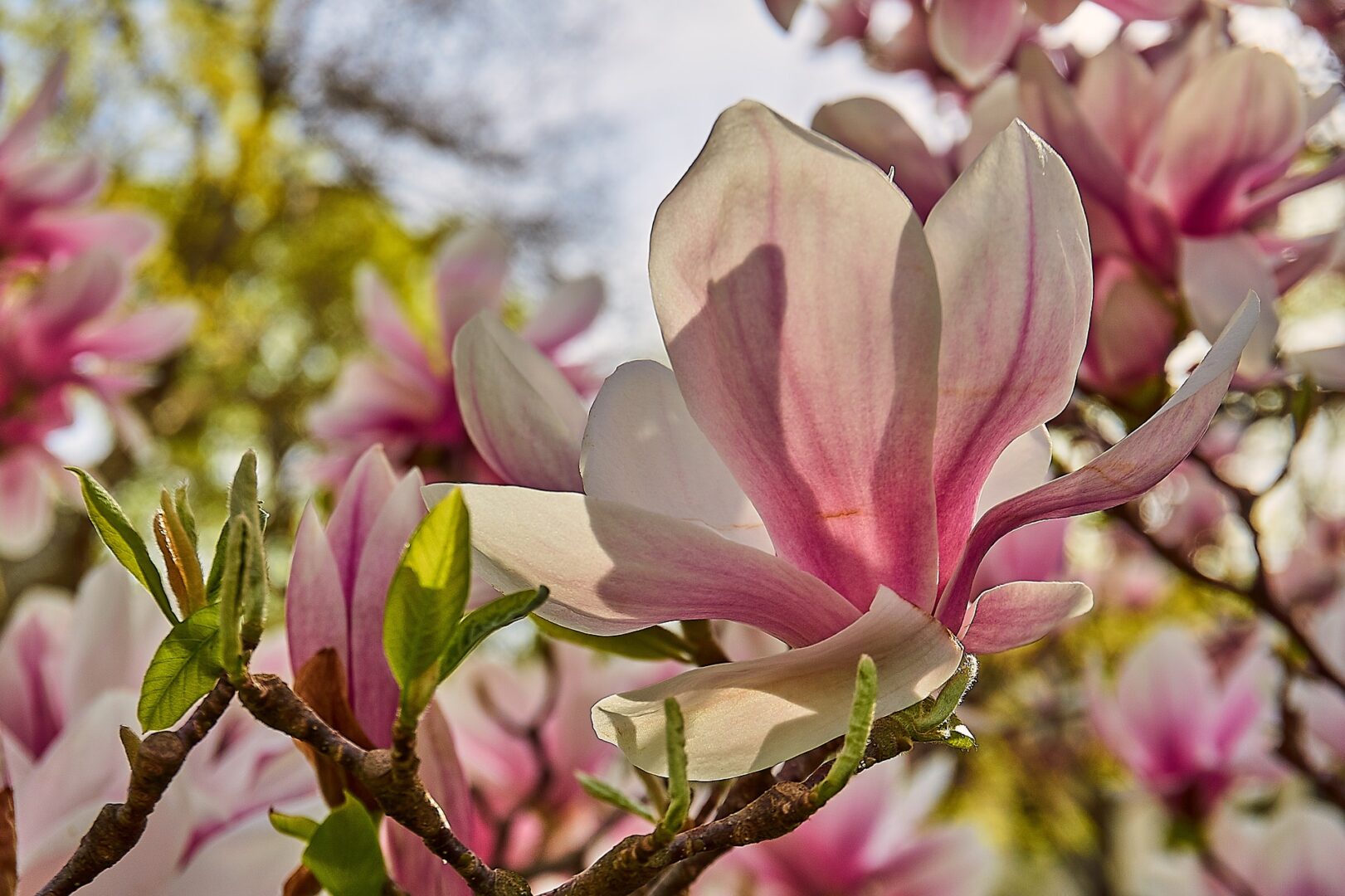April is National Gardening Month. No wonder–Forsythia, redbuds, Bradford pears, daffodils, and tulips are blooming everywhere you look. Right now my own yard is a riot of color—the lush rose pink of the redbud, the sunny yellow of the forsythia and daffodils, the little patches of rich blue muscari and light blue starflowers, and the yellow dandelions and purple violets dotting my backyard (on purpose).
I’ve already planted sugar snap peas alongside the kale and spinach that wintered over and I’m eagerly watching for the new shoots to come up. It seems like Spring took its time getting here—but it’s here. That doesn’t mean, however, that I’m not on guard against one of Mother Nature’s surprises—like the one we got last year the end of April. That’s the one that nipped all the flower buds on my pretty little hardy orchids.
They say our last “average” frost date is April 15th. The key word is “average.” That means we have had last frosts before that date and AFTER that date. We’ve had killing frosts here as late as May 10th! I’ve gotten burnt (well, actually, FROZEN) one too many times by planting too early. I will not commit tender flowers and veggies to the ground before the first week in May. If you like wrestling with row covers or throwing sheets and blankets over plants in your yard, go for it. I’m sticking with the lower stress road.
One thing that I am doing now is one last check for winter damage. This past winter was unusually cold back in January and a number of my plants that have never shown winter damage are showing it this year. My rosemary and lavender are toast—again—but that wasn’t a surprise. What was a surprise was that I lost my sage and oregano—which have been in the ground for over ten years. The lemon balm which was trying to take over my side yard is only coming up in a couple of patches—instead of a couple dozen patches.
Still, with all the problems my garden brings, the joy it brings is more. I’ve said before that it’s my “Happy Place.” As a matter of fact, I just read an article on livescience.com that says there is actually scientific evidence that there are beneficial bacteria (Mycobacterium vaccae) in the soil that stimulate neurons in the brain that are responsible for serotonin production. Serotonin is a neurotransmitter that is believed to be responsible for feelings of happiness and well-being.
This theory was tested on lab rats and, what do you know, the results were increased cognitive ability and lowered stress! Sometimes, maybe all we need to do to boost our mood is get our hands dirty!
Stop by the Great Big Greenhouse–we have all kinds of excuses to help you get your hands dirty as you create your own “Happy Place.”

